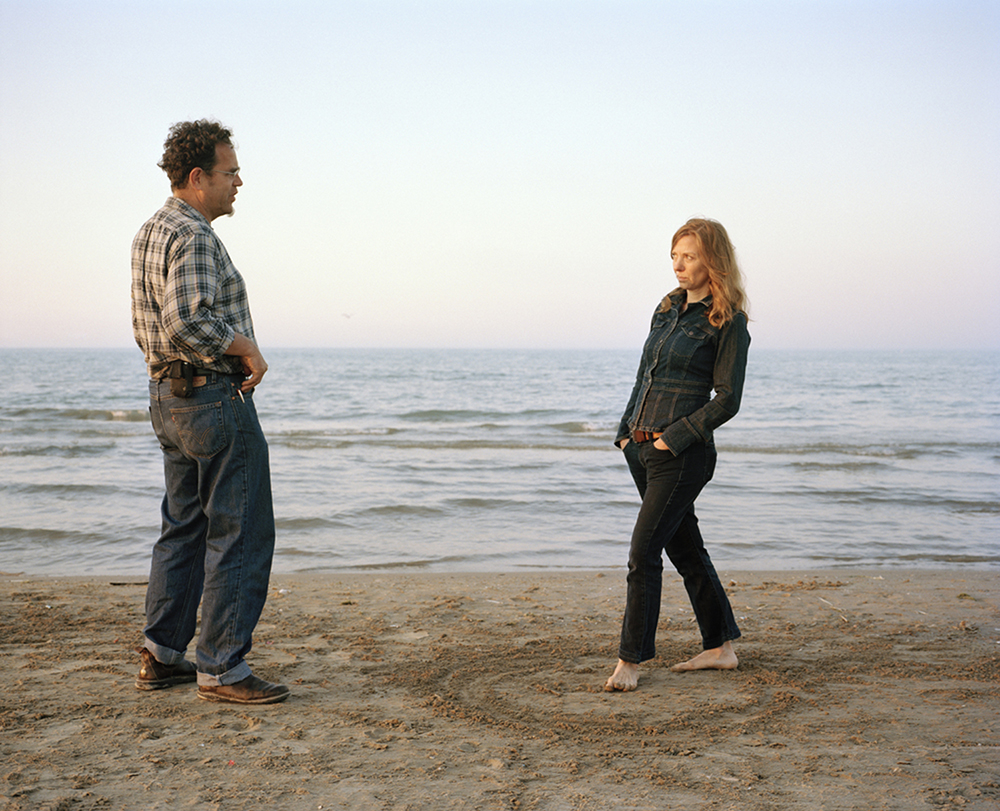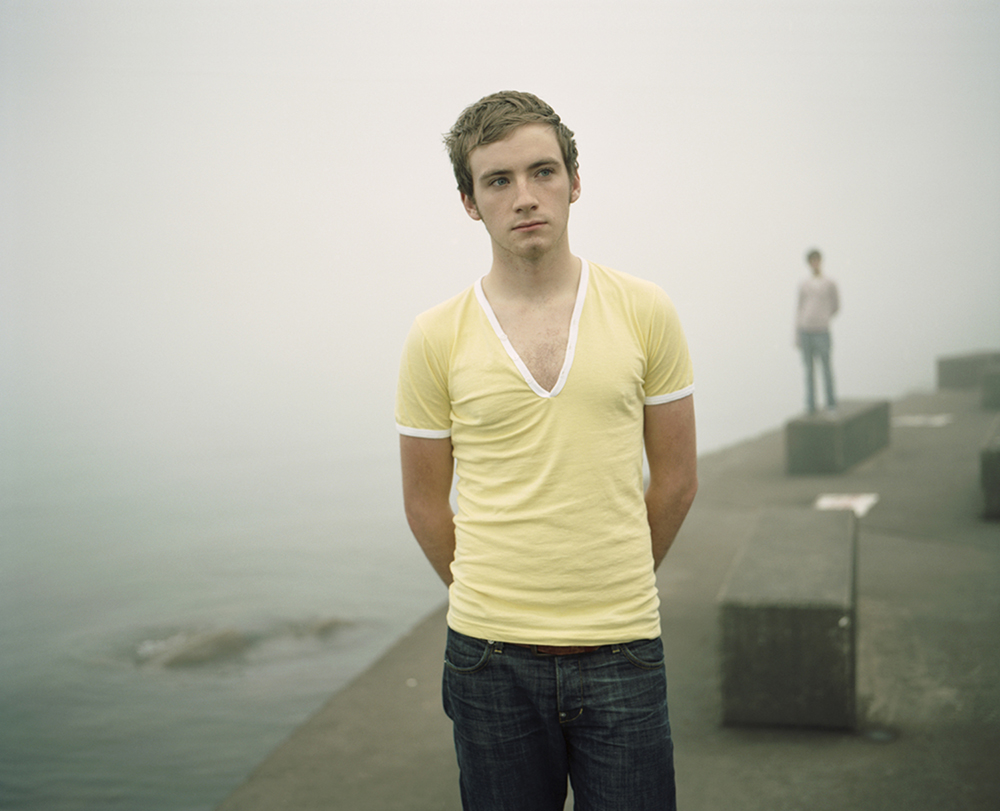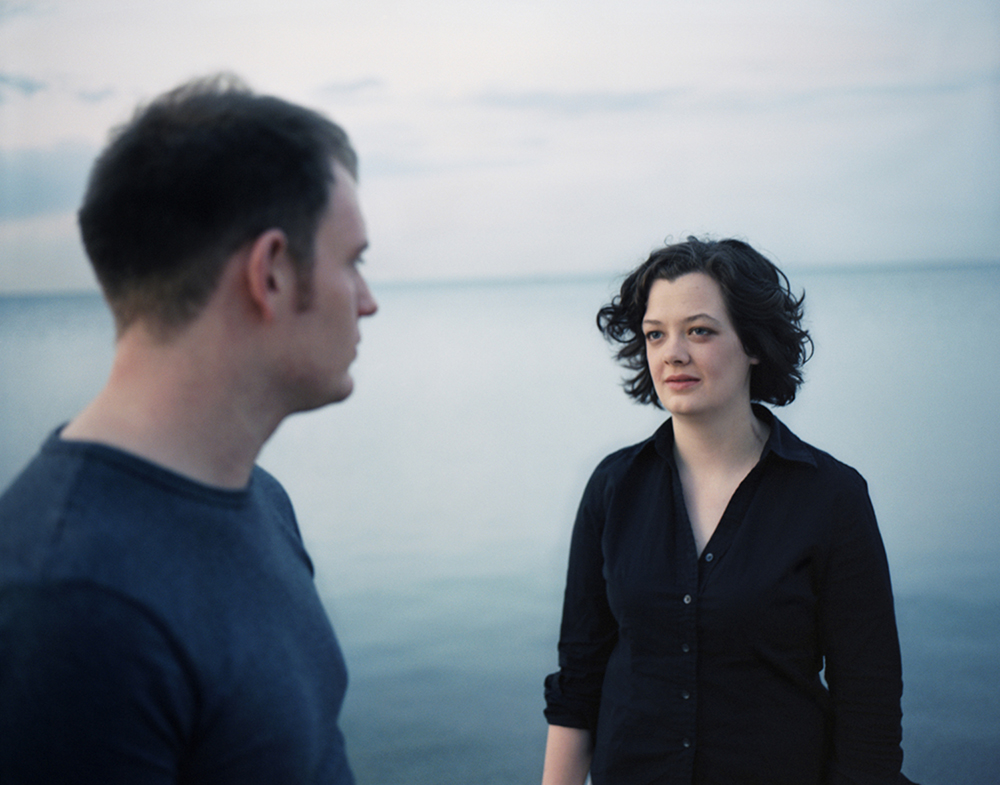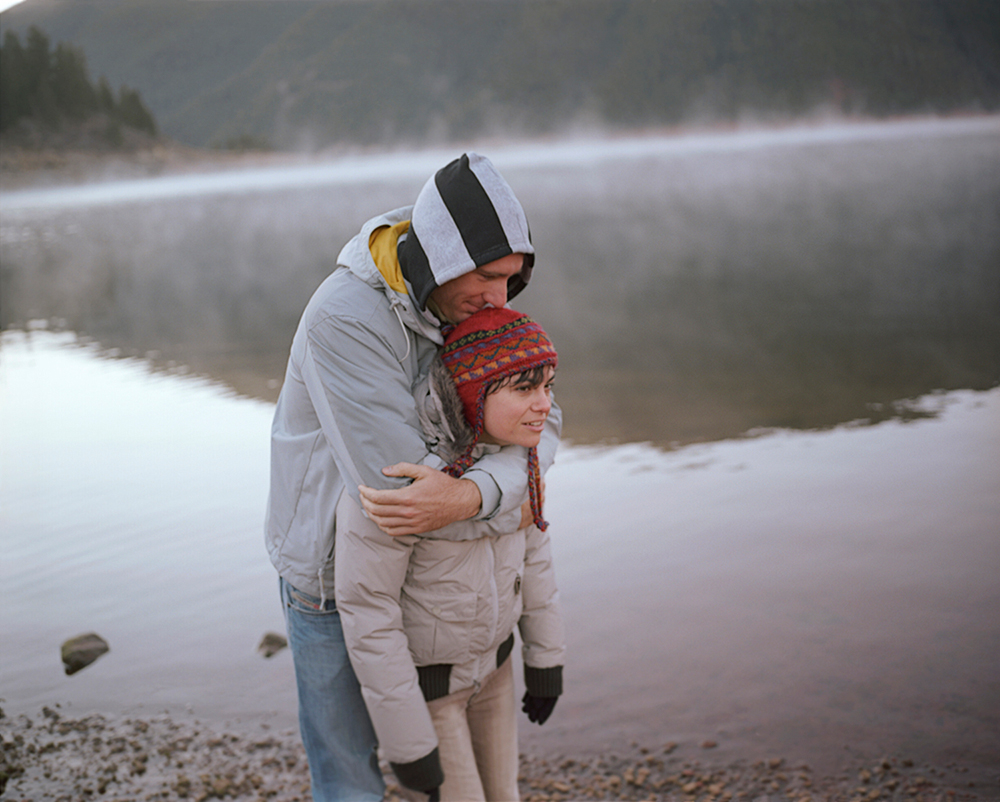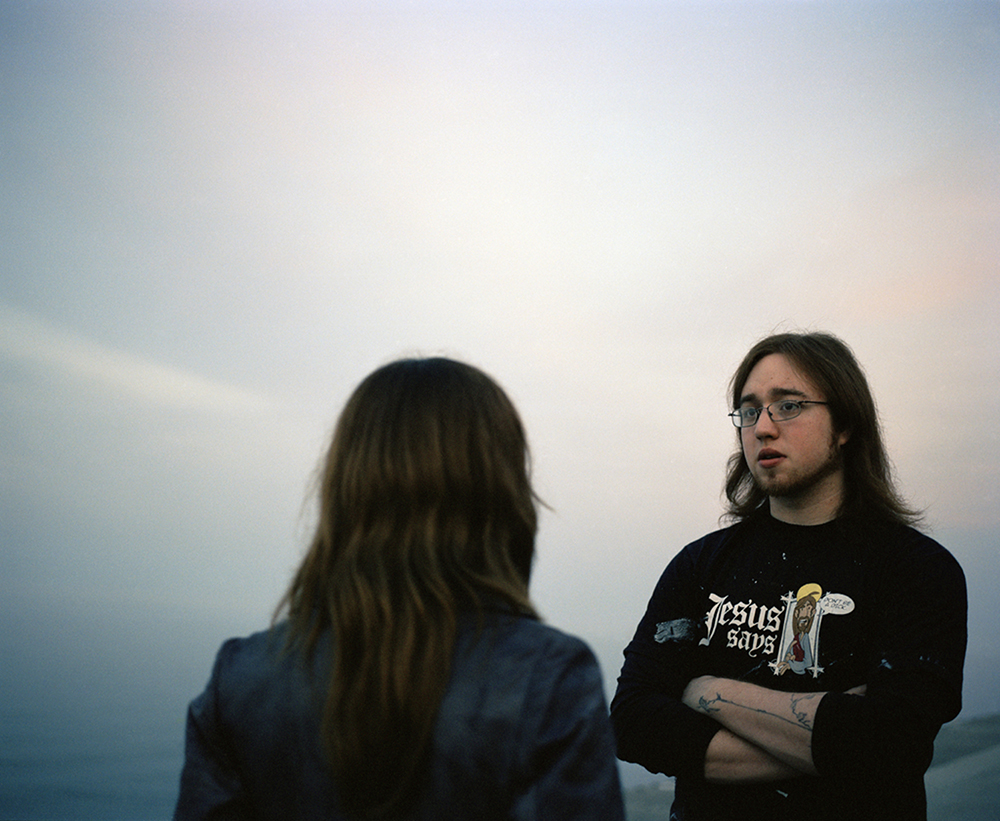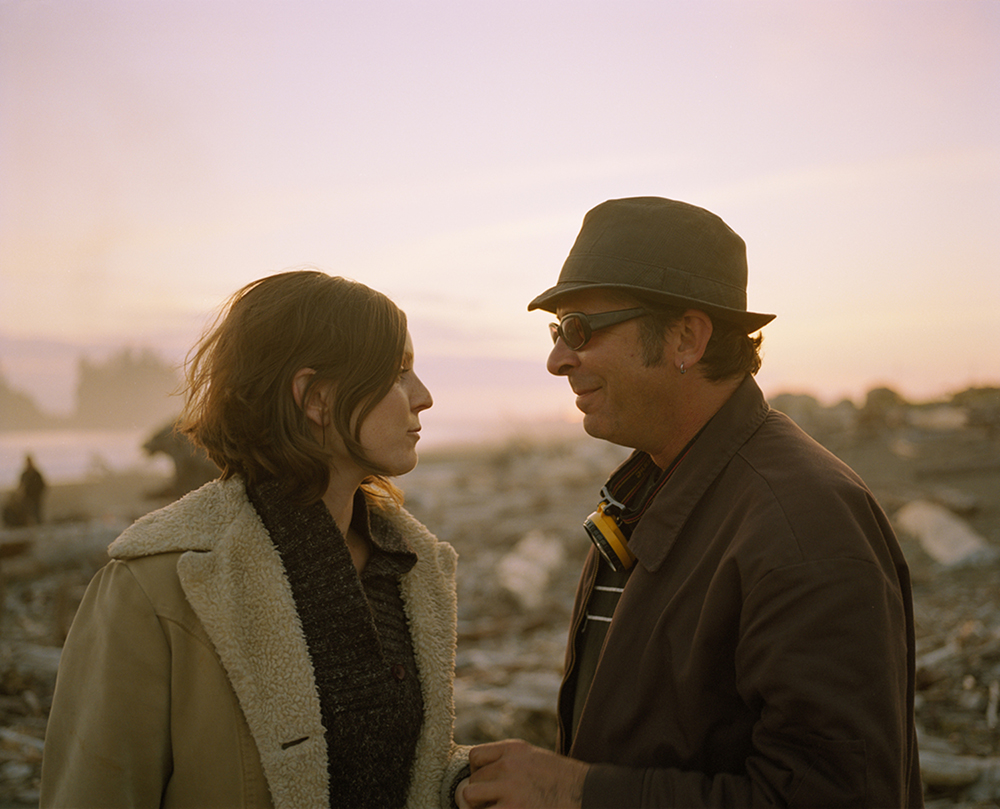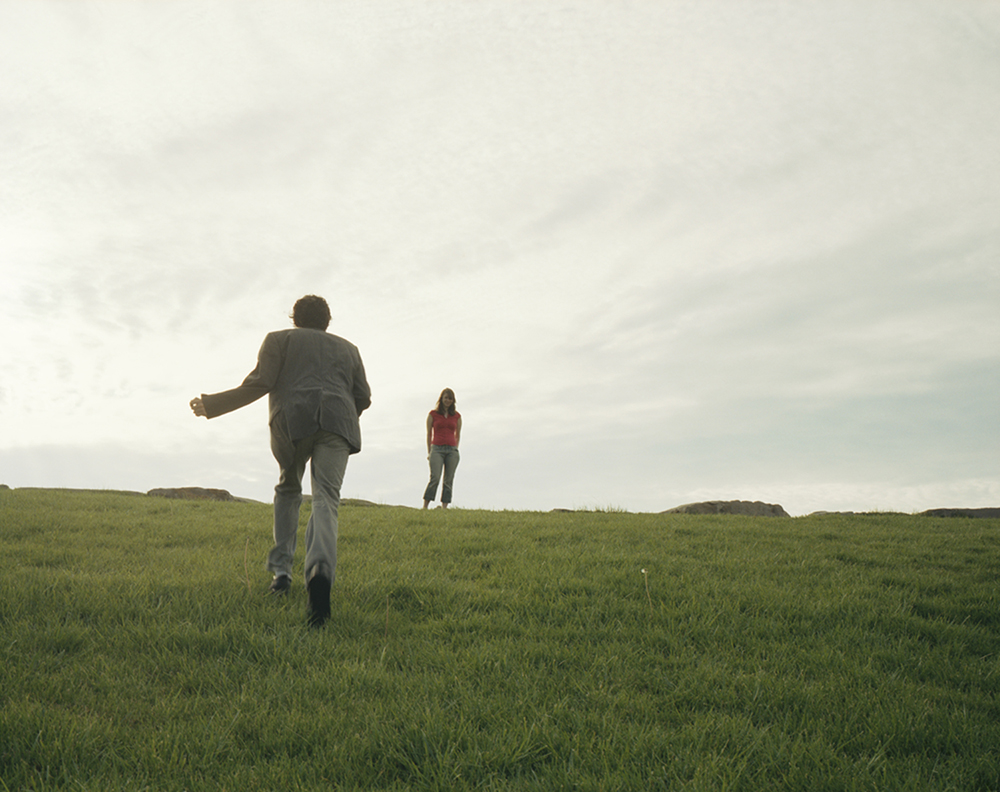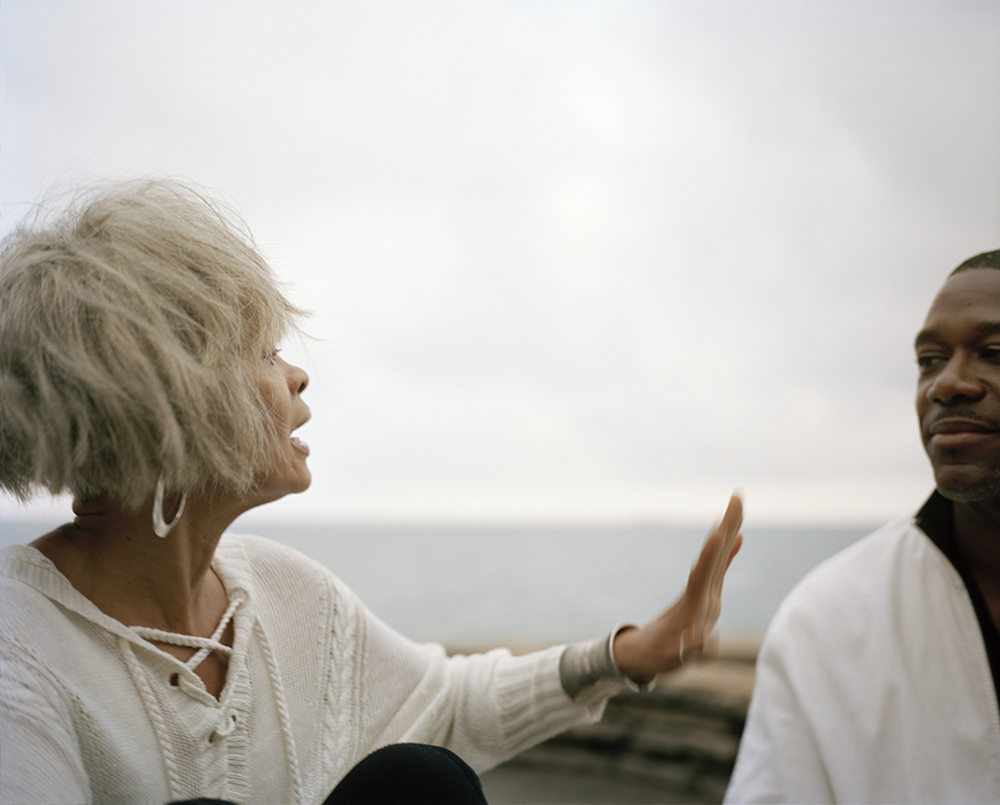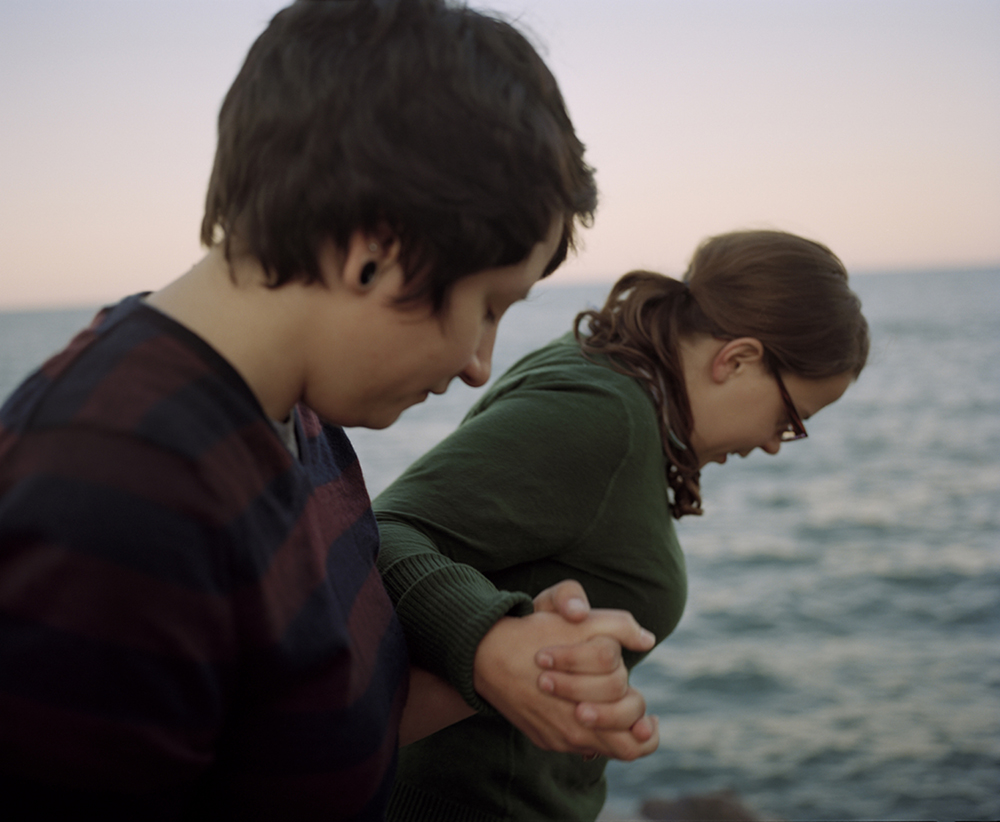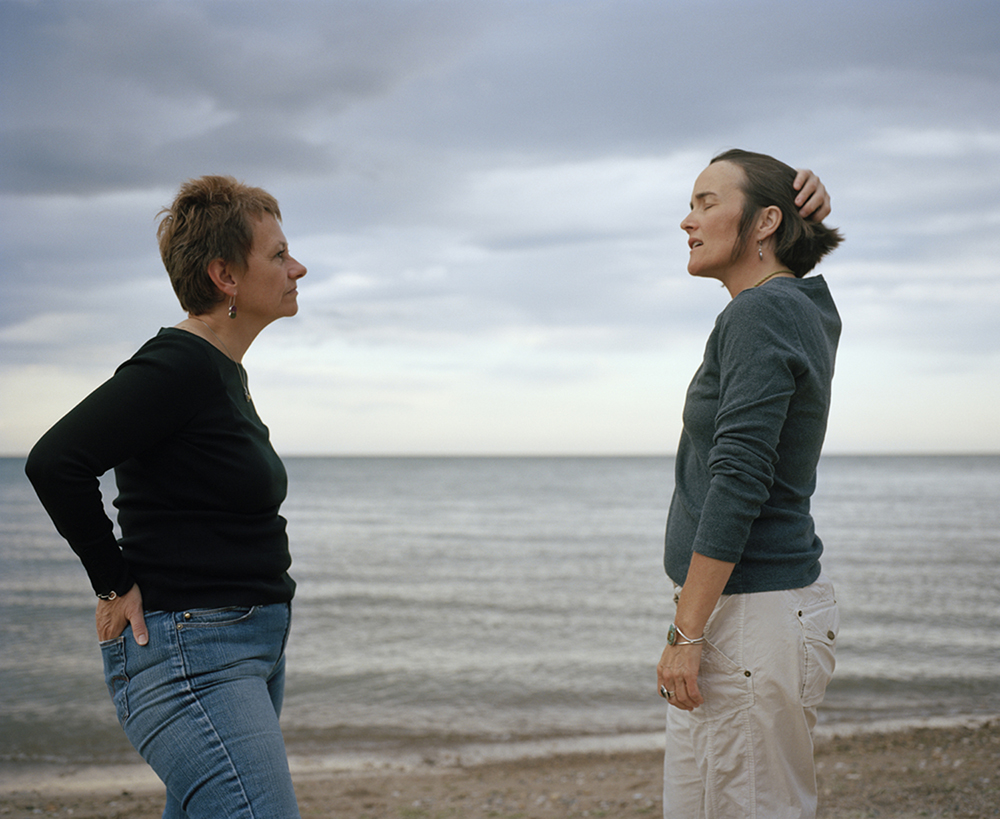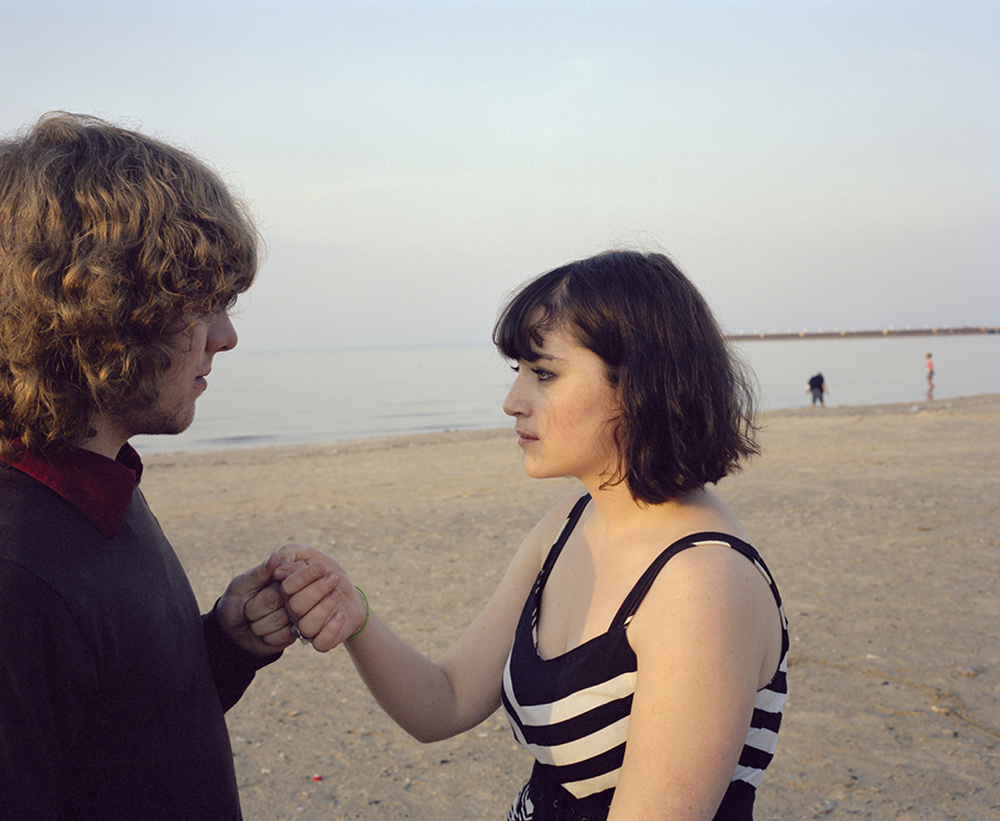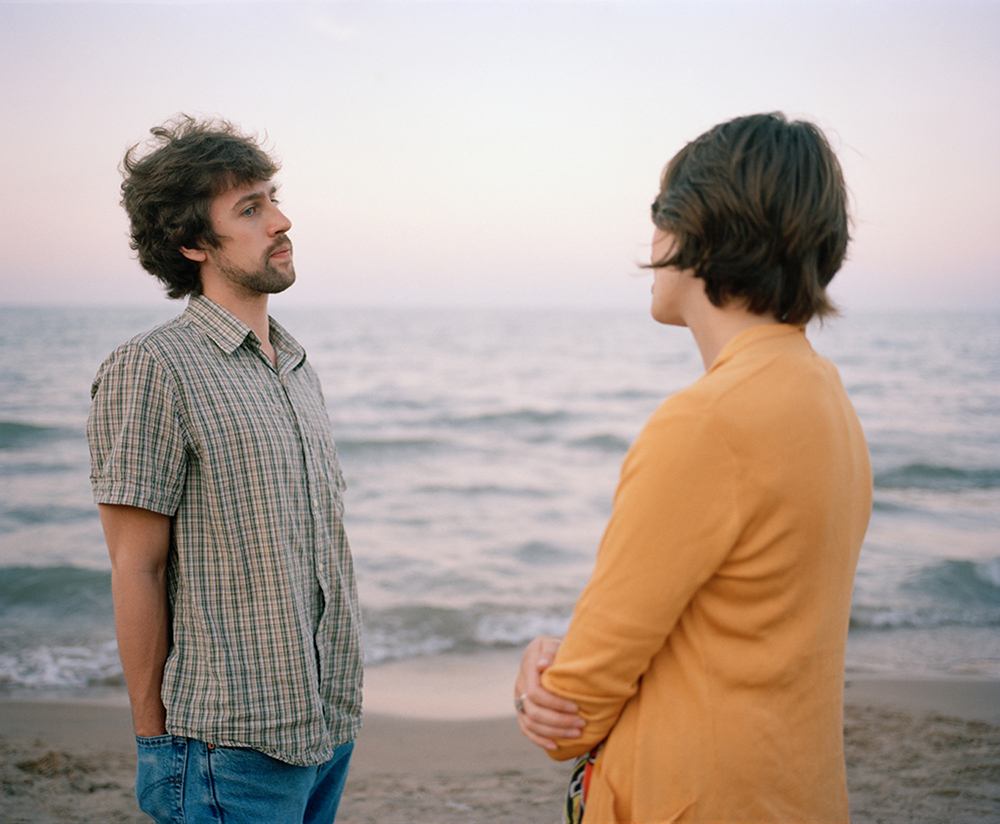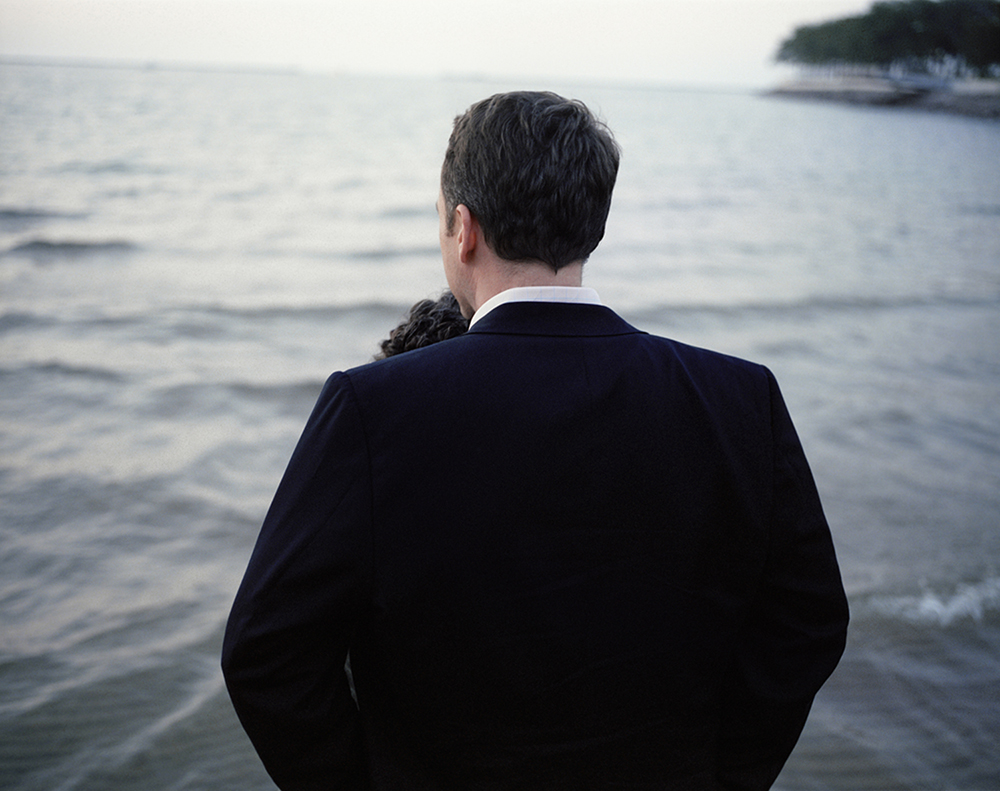LOVE Week: Rachel Herman: imp of love
Rachel Herman’s portraits of couples once in love follow the long arc of Cupid’s arrow. When couples fall out of love, what remains between them? Herman’s conceptual approach takes aim at the mysteries of emotional connection in the aftermath of romance. She does not spare us the discomfort of this territory: the settings are calm, yet the air between the pairs feels charged. We witness couples defining space in gesture and body language, carving out ways of engagement in the wake of romantic love.
Rachel Herman researches and makes work about intangible states of consciousness – like love, grief, and interconnectedness. While working on her first book, float chandelier float, about perceptual shifts of time and space during mourning, she also helps preserve the legacies of artists who have influenced her own thinking, including Alan Cohen, a Chicago-based photographer who studied at the Institute of Design with Aaron Siskind, and Audrey Leamon, a painter who records mystical otherworldly transmissions.
She lives in Chicago and teaches photography and visual culture at The School of the Art Institute. Rachel studied visual art and visual theory at the University of Chicago and literature at The University of Michigan in Ann Arbor. She has been awarded residencies and fellowships from Anderson Ranch, Light Work, and the Chicago Department of Cultural Affairs, among others. Her work is in the permanent collection of the Nelson-Atkins Museum in Kansas City, MO, her hometown. She is a certified Reiki Master and Reiki Phowa practitioner.
Follow Rachel Herman on Instagram: @Rachel8Herman
the imp of love
My interest in photography grew out of the desire to make the ineffable effable, the impossibility of making the invisible visible. From 2006 to 2010, I worked on a series called the imp of love that asked questions about how love, a very particular kind of love, could be made visible.
I photographed couples, once-lovers who were renegotiating their relationship in a new context. Even though they weren’t romantically linked at the time the photographs were made, they still spent time together, sometimes compulsively, even though that time could be painful, awkward, confusing, or poignant.
It was more important for them to traverse these hillocks than to cut off contact altogether. They still have an abiding affection for one another, but an affection that is often loaded, layered, complicated or unrequited.
A couple in love is a familiar and often relatively uncomplicated sight. Photographs like these show what love looks like in relief. The watery backdrops thread through the group as a whole, yet variations reflect particularities of each couple. The settings are mutable, neutral and removed from the everyday or the specificity of home. They also tend to act as an extended metaphor for the mood depicted.
Spencer in Canto IV of The Faerie Queen refers to Cupid as “the imp of love.” Less familiar is the falconry connotation: a falconer imps a broken wing by thrusting one end of a wet iron needle into the quill of a new feather and thrusting the other end into the quill of the feather to be imped. The process can be painful, but ultimately it’s one that allows the bird to take flight yet again.” – Rachel Herman
Rachel and I met for an interview at a café where the owner recalled she had participated in this project. She remarked that the photograph was important for her children to see her and her ex-husband “together in the same frame”— an endorsement for the one of the aims of Herman’s project and a segue to more questions.
BC: I am curious how you phrased the invitation to participate in your project?
RH: Initially, I approached the idea of photographing love directly by asking couples who were together and very committed to one another to see what that might look like. I made a number of images which were less interesting to me perhaps because they were more immediately recognizable, known, and, therefore, easier to dismiss. In a serendipitous turn of events, a couple I invited to participate, who I viewed as a deeply connected couple had, unbeknownst to me, broken up. They said we can’t pretend this didn’t happen but they still showed up. All the images from that session were so powerful. There was something incredibly devoted between the two of them. The way they were relating to one another gesturally in the frame showed that even though they had ended the romantic part of their relationship, they were still so generous with one another, still connected. Subconsciously, their bodies were referring to one another. And that made me rethink what I was doing. As projects evolve, you find that your first question might be the obvious approach, and as you move forward, you find a better question to drive the project.
BC: How much direction did you give during the sessions?
RH: I provided very little. It was probably frustrating with how little direction I gave them. I would ask them to choose a place that was special to them near a body of water. I lived near Promontory Point in Chicago when I began this project, and the lakefront has always felt like a communal backyard. This was an intuitive choice, but the early shoots felt calming and borderline romantic. So, the landscape did a lot of directing for me. We would meet towards the magic hour because I wanted that particular kind of light. I was shooting film and wasn’t using any additional lighting which forced us to work with a time constraint. And I just had them be in the frame together. I found that one person in the partnership had played a role of peacemaker and that person would initiate something that, without premeditation, would set their former partner at ease. And I would photograph them as unobtrusively as possible.
BC: The ancient Greeks described many kinds of love beyond Eros. Were you thinking about love in these extended terms?
RH: At the time, I was reading so much about love – Anne Carson’s Eros, bell hooks’ All About Love, and Rilke’s Duino Elegies. Those poems especially each explore a different kind of love, be it divine, maternal, fraternal, or romantic. In our society, we tend to be prescribed roles that I feel are extraordinarily limiting. It’s fascinating all the different forms love can take, and I was thinking we don’t have a name for this kind of love. And photographically, I was trying to interrogate what that love looks like.
BC: Why did you choose photography as the medium to picture this transitional state that seems to be outside our abilities to describe it?
RH: I have been working this way for as long as I can remember. Photographing is, for me, less of a way to represent the world and more a way for me to figure out bigger questions. Photography has traditionally been a medium to document objectively: the image as proof of fact. but, like Saul Leiter and many, many photographers I admire, I have always been drawn to how photography allows me to convey a feeling and make it visible.
When I was in grad school at the University of Chicago, one of my advisors made the observation that I was inherently interested in trying to make emotional states visible – love in particular. Naming it felt important because it opened up a clear path towards a directed way of working and investigating the world.
BC: It’s been 12 years since you finished this project. Have you ever wanted to do an update or see where the participants are now they are now in their relationships?
RH: You mean step into that same river twice? {smiles} No, or at least not yet. But I am interested in trying to photograph other emotional states. When I lost someone very close to me, I started experiencing time and space in strange ways. Everything was slowed way down, and objects appeared to have layers I’d never seen before. Deep mourning felt like being in a gravitational warp that pulled on me – and my visual perception in particular. Those images are collected in a book I’m working on called float chandelier float.
Now I’m working on how to picture love between people who are no longer on this plane. How do we photograph that connection? We really are only at the beginning of understanding consciousness and how far our field of consciousness extends. And that’s really what I’m interested in trying to make imagery of now.
Posts on Lenscratch may not be reproduced without the permission of the Lenscratch staff and the photographer.
Recommended
-
Salua Ares: Absense as FormNovember 29th, 2025
-
Ricardo Miguel Hernández: When the memory turns to dust and Beyond PainNovember 28th, 2025
-
Pamela Landau Connolly: Columbus DriveNovember 26th, 2025
-
KELIY ANDERSON-STALEY: Wilderness No longer at the Edge of ThingsNovember 19th, 2025
-
Jackie Mulder: Thought TrailsNovember 18th, 2025

